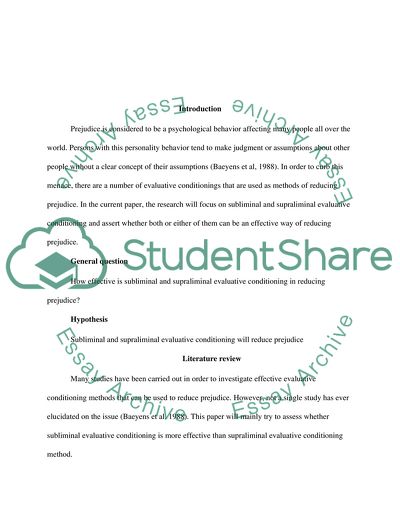Cite this document
(Subliminal and Supraliminal Evaluative Conditioning Research Proposal, n.d.)
Subliminal and Supraliminal Evaluative Conditioning Research Proposal. Retrieved from https://studentshare.org/psychology/1760412-examine-the-effects-of-using-subliminal-and-supraliminal-evaluative-conditioning-as-a-method-to-reduce-prejudice
Subliminal and Supraliminal Evaluative Conditioning Research Proposal. Retrieved from https://studentshare.org/psychology/1760412-examine-the-effects-of-using-subliminal-and-supraliminal-evaluative-conditioning-as-a-method-to-reduce-prejudice
(Subliminal and Supraliminal Evaluative Conditioning Research Proposal)
Subliminal and Supraliminal Evaluative Conditioning Research Proposal. https://studentshare.org/psychology/1760412-examine-the-effects-of-using-subliminal-and-supraliminal-evaluative-conditioning-as-a-method-to-reduce-prejudice.
Subliminal and Supraliminal Evaluative Conditioning Research Proposal. https://studentshare.org/psychology/1760412-examine-the-effects-of-using-subliminal-and-supraliminal-evaluative-conditioning-as-a-method-to-reduce-prejudice.
“Subliminal and Supraliminal Evaluative Conditioning Research Proposal”, n.d. https://studentshare.org/psychology/1760412-examine-the-effects-of-using-subliminal-and-supraliminal-evaluative-conditioning-as-a-method-to-reduce-prejudice.


